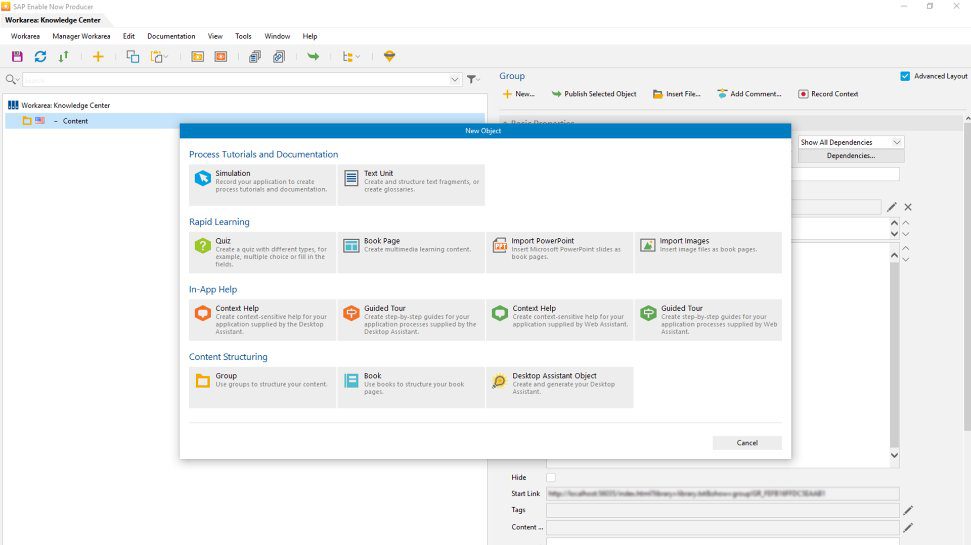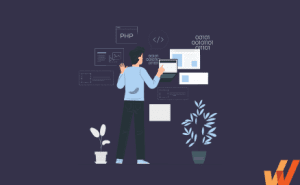What Is Real-Time Learning? The Next-Gen Learning Paradigm
- August 7, 2018

Old habits die hard. They die hard even in the face of rapidly accumulating evidence that such habits could be becoming pointless, at the least, and self-destructive, at the most.
For years, training and enablement managers have been obsessed with delivering knowledge in a linear classroom sort of setting. They earnestly believe it accords the learning process an interactive dimension which is not possible with any other method. Such a method may not appear broken and what’s not broken need not be fixed.
But evidence to the contrary is emerging and it’s slowly becoming apparent that linear learning methods may have been broken, after all.
We are in an age where broken processes vehemently attract disruption. And one such disruption is changing the entire dynamics of how knowledge is delivered to workers and how they consume that knowledge.
What is Real-Time Learning?
Real-time learning takes the basic concept of knowledge discovery and turns it around on two counts. Real-time learning transforms the linear knowledge delivery process into a form of help and guidance mechanism that is available in the moment of need rather than at one predefined point in time.
This means that, unlike e-learning practices, real-time learning follows a non-linear modality of knowledge delivery.
Second, real-time learning makes knowledge stick by enabling ‘learning in the flow of work so that the learner is able to take knowledge and apply it directly to his or her workflow exactly when it’s needed. So, the employee may have to go through the same workflow-based learning process twice or thrice but because he or she is actually applying the knowledge in real-time, it’s going to stick.
On a broader level, real-time learning is a bit like account-based marketing (ABM), if that’s a good analogy. In the sense that it flips the years-old practices on their head and takes a bottom-up approach. Rather than casting a wide learning net where every employee gets the same dose of learning, real-time learning takes a more granular approach personalizing knowledge delivery to each individual employee obviously based on their needs.
What’s the advantage? Unlike traditional training methodologies, real-time learning is completely focused on enhancing end-user productivity and performance.
Real-time learning doesn’t have a classic definition as yet considering it’s still not widely adopted by organizations. But, as Josh Bersin puts it, a good real-time learning definition would be: “Real-time learning processes understand your behavior and give you real-time guidance and performance support without even asking.”
Why Do You Need Real-Time Learning?
o be fair, data is stacked against e-learning or classroom based formal learning methods. To begin with, it needs the employees’ time. They are required to sit in a learning environment for the entire duration of the instructor taught modules. But, employees don’t have time. The #1 challenge for training managers this year – according to LinkedIn’s 2018 Workplace Learning Report – is to get employees to make more time for learning when typically they can allocate a max of 1% of their total work hours.
Next, to assess learner behavior, O’Reilly Media examined 1.6 million individual learning events executed by 169K unique learners across 12 industries. The finding? Almost 42% of the time, employees were engaged in non-linear learning behavior. Learners didn’t sit through entire courses but only skipped to the part relevant to their current needs.
Another statistic worth mentioning from LinkedIn’s report is that almost 49% of employees want to learn to be available at the point of need. Needless to mention, it must also be easily available at the time of need or be just-in-time learning.
Real-time learning is perfectly aligned with employees’ expectations providing them with pinpoint information, or a sort of contextual help, and guiding them through their tasks. Few workers would want to take an entire e-learning course or sit through all the classroom training sessions unless they have been mandated to do so. In a free world, they would just search for the information they need at that point in time, find it, and get back to their work.
Real-Time Learning vs Linear eLearning & Classroom Training
The purpose here is not to discredit instructor-led training or to prove that real-time learning is superior to any other training method. In fact, there are situations where real-time learning can brilliantly complement e-learning or classroom training and there are situations where it can act individually. On the other hand, there are multiple scenarios where e-learning still comes in handy. For instance, soft skills and leadership training are a huge area of interest for organizations as they begin to develop millennials for leadership roles.
However, one very important use case where real-time learning fits perfectly is enterprise software application training. This is a scenario where classroom training and linear e-learning, in conjunction with text-based documentation, are often employed but to little positive effect. Here, real-time learning helps massively because it provides application users with just-in-time learning, in-application guidance, and contextual support that no other mode of training can deliver.
On a broader level, though, there are several differences that real-time learning has with the legacy methods of training and knowledge delivery.
1. Real-time learning is highly targeted
Real-time learning is highly targeted in its knowledge delivery meaning learners get exactly the knowledge that is relevant to them and that they actually require to complete a workflow.
2. Real-time learning is integrated into the workflow environment
One of the important factors that separate real-time learning from linear e-learning methods is that it is deeply integrated into the workflow environment. When learners are just looking for specific information, they don’t have to switch between windows or environments trying to gather and apply knowledge at the same time. In essence, real-time learning, training, and application happen in the same frame.
3. Real-time learning focuses on end user productivity
The objective of real-time learning is to enable employees and help them up to their game. Modules are designed to be task-based and learning is experiential which, when combined, leads to improvement in end-user productivity. This is also because employees don’t have to spend a lot of time searching for knowledge or sitting through sessions they may not even remember after a while.
| Classic e-learning | Real-time learning | |
|---|---|---|
| Learning Progression | Linear | Non-linear and on-demand |
| Measure of Success | Course completion | End-user performance |
| Delivery | Isolated environment | Embedded in-app |
| Personalization | High levels of personalization, contextual | Limited personalization |

4 Benefits of Real-Time Learning
Here are four reasons why real-time learning works in corporate settings.
1. Absolute ROI
In the traditional sense, ROI isn’t really an active metric for Learning & Development functions within an organization. Like IT, L&D is also a sort of cost center because it primarily involves a human dimension. However, in today’s competitive business landscape, value creation is the primary objective for every function and role. And L&D is no exception.
Notwithstanding the human angle, ROI can still be measured on L&D when objective methods like real-time learning are put in place. Secondly, since real-time learning helps employees cut classroom training times and the time they spend on knowledge discovery, it leads to a direct productivity increase which can easily be quantified.
2. Highly efficient and scalable
Efficiency and scalability are two of the most critical parameters on the basis of which any new processes are judged today. Real-time learning is highly efficient in delivering what it promises. Since there is no delay in the application of acquired knowledge, there is no loss in knowledge retention. As is widely known, low retention of knowledge is one of the key problems that classic e-learning and classroom training have.
Apart from being efficient, real-time learning is also highly scalable and capable of being served to thousands of employees across multiple geographies and locations. Since there is no human intervention required at any stage of the learning process and knowledge delivery is automated, real-time learning can be instantly scaled to any number of users.
3. Personalized and optimized
Unlike traditional employee training methods, real-time learning works in a constant feedback loop taking in data from end-user preferences and behaviors to optimize the learning content. Real-time learning makes use of analytics for this purpose and each micro piece of content can be scrutinized to understand if it’s working or not.
Knowledge is also personalized based on individual end-users and their specific roles. So, a manager-level employee will be served knowledge and guidance that is different from someone lower in the hierarchy, obviously, because their job functions are completely different. Real-time learning actively takes this into consideration segmenting the audience and segregating knowledge by segment.
4. Better employee experience
An enjoyable employee experience is one of the key constituents of the modern digital workplace. As much as organizations need to enable employees with the right set of tools and knowledge to keep generating value, both in the short and long terms, organizations also need to ensure that the experience of using these tools and acquiring the requisite knowledge is not poor. The learning process, as a result, is crucial here.
Great experiences are always about being proactive and contextual. The opposite makes a bad case of experience. You would know this is true from a consumer standpoint as well. Real-time learning helps deliver a positive experience because it is proactive in delivering knowledge without the end-user really asking for it. And it is contextual in delivering relevant knowledge. By providing a positive learning experience, real-time learning creates the environment for a great employee experience and becomes an agent for transformation.


Examples of Real-Time Learning
Well, it might be the new kid on the block, but real-time learning is already seeing some fantastic implementations, not by smaller players but by the enterprise SaaS companies themselves. In a way, this confirms the appeal of real-time learning and establishes its credibility.
There are only a few as yet but a couple of good real time learning examples include SAP Enable Now, Whatfix and Workday Guided Tours. Salesforce is also working on a similar platform called myTrailhead, though it’s yet to be released publicly.
SAP Enable Now provides tools that provide performance support and training capabilities to improve end-user productivity. SAP Enable Now provides application and performance support within the application.


Whatfix is a Digital Adoption Platform helping organizations drive end-user adoption of enterprise software applications they use. Whatfix provides in-application training and guidance along with always available help that is sensitive to every individual user’s current context within the application workflow.



Enterprises and businesses alike are seeing that worker behaviors are quickly changing and there is an imperative to align learner expectations with learning delivery mechanisms.
As Josh Bersin suggests, real-time learning may not be the go-to for all types of learning but it’s coming quickly and is disrupting the way organizations deliver workflow knowledge to their employees.
As the world business landscape becomes more competitive than ever, organizations have no choice but to transform their internal processes to suit the digital age. Learning is one of those processes. The primary driver for functional heads across companies today must generate the maximum value out of their teams and the tools they have. But this can’t be accomplished without a learning paradigm that empowers employees to be productive and perform at a higher level than they usually do.
Request a demo to see how Whatfix empowers organizations to improve end-user adoption and provide on-demand customer support
Thank you for subscribing!


